
Mountain shells are a staple of the outdoor wardrobe, designed to provide protection from whatever the elements throw at the hills. Below we outline the important things to look for in a hard shell, then compare eight men's and women's jackets we've had on test from the companies listed above. Most are available in men's and women's versions.
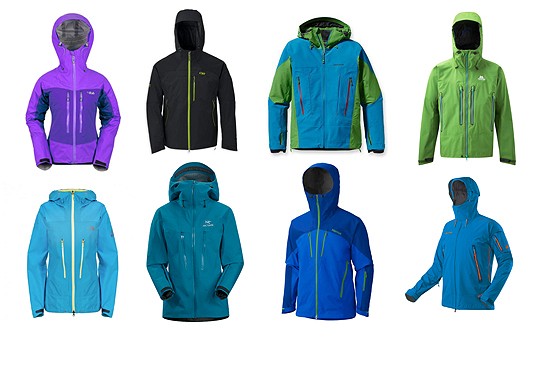
Fit and Cut: A good fit is probably the single most important thing to look for in a mountain shell. A good fit should feel neat but unrestrictive, there should be sufficient room for layer(s) underneath but minimal bagginess and the jacket shouldn't lift (or cuffs be pulled down) when arms are raised.
Hood: Hoods on mountain shells need to provide excellent protection from wind, rain and snow without overly restricting head movement and vision. A mouldable stiffened brim is very useful for being able to adapt the hood to protect the face from driving rain or snow. Hoods need to adjust to fit neatly both without and with helmets, and ideally also be able to be cinched/folded down out of the way when not in use.
Fabric: Most of the shells reviewed here are made from Gore-Tex Pro – while Gore-Tex no longer has near-total monopoly on high performance waterproof breathable fabrics it remains the standard to which all others are judged proven by many decades of use. Gore-Tex is a membrane, laminated to the face fabric (almost always nylon) of the jacket. The choice of face fabric determines the durability, weight and drape of the jacket – sometimes tougher face fabrics are used to reinforce higher wear areas, or ripstop fabrics are used to increase durability without adding much weight. More about the other fabrics featured in the test here: Polartec NeoShell and here: Gore-Tex Active Shell.
Zip: Water resistant zips are now standard on mountain shells – eliminating the bulk and complexity of multiple storm flaps used on their predecessors. However, on normal water resistant zips the thin plastic coating which seals the zip is not indestructible and after a couple of seasons use the main zipper has often slightly worn the plastic away allowing water in. Internal storm flaps help manage this, but zips should really last for the lifetime of the (often expensive) shell. A recent improvement is the adaptation of drysuit-style zips now used by some manufacturers – while slightly bulkier these seem much more durable. Additionally, it can be useful for the main zips to be double ended – opening both from the top and the bottom – allowing easier access to underlayers without opening the whole jacket or removing a rucksac and /or harness. A soft touch patch to stop the zip catching the chin is now virtually standard on all mountain shells.
Pockets: Pocket tastes are personal, but as a general guide mountain shells should have at least some externally accessible pockets that sit above a rucksack waist belt or harness, and are sufficiently large to easily accommodate a map, and/or a pair of gloves, ski goggles etc.
Adjustment: Elasticated drawcords are generally used to adjust the hem and hood. Ideally, they should be easily operable with one hand, intuitive to locate and adjust and on the hood designed in such a way that if the hood is adjusted tightly the ends can't whip in the wind and catch the lower face. Cuffs mostly use velcro – the tabs should be neat but have enough contact to not come undone unintentionally at any setting of cuff size. To allow for better temperature regulation on the move many mountain shells feature underarm ventilation zips. They generally work well, but can add awkward bulk or be difficult to close if not well designed.
Additional features: Depending on the intended use mountain shells may sometimes come with e.g. pockets designed to fit GPS units or ski-orientated features like snow skirts and lift pass pockets.
Arc'teryx Alpha SV Jacket
RRP: £500
Average Weight: 492g
Fabric: Gore-Tex Pro
More info on the Arc'teryx Website
Fit: Arc'teryx's classic top end hard shell, which is made in their Vancouver-based factory, has been regularly refined and updated since it was first launched in 1998. The latest model has been re-patterened for a closer fit. The smaller chest circumference still allows good arm movement thanks to gussets and articulation, very neatly achieved with a micro-seam allowance (1.6 mm) and tiny waterproof Gore seam tape (13 mm). The fit is still quite generous as it's designed to go easily over a base layer and midlayer.
Hood: The hood easily swallows a helmet and cinches down quite well if not wearing one. A typical rear toggle pulls it back from your face and is attached to the hood so you can pull it with one finger. Two other drawcords pull the helmet down, offering balaclava-like protection. The drawcord ends run through an eyelet and pop out lower down the jacket, neatly preventing them from whipping your face.
Fabric: This jacket is made from Gore's updated Gore-Tex Pro. The face fabric is Arc'teryx Gore-Tex N80P-X, a fabric Arc'teryx developed in conjunction with Gore. It's made from an extremely resilient nylon, woven in a special way to resist fraying. Tiny ends of frayed fibres can make water droplets burst, blocking the pores of a fabric and making it harder for the DWR (durable water resistant) treatment to make water roll off.
Zips: The main zip is a one way YKK Vislon Aquaguard zip, the kind that has bigger drysuit-style teeth. I find these always work, unlike the finer teethed Aquaguard zips, which can become stiff and fiddly particularly in colder and icy conditions.
Pockets: On the outside the Alpha SV has a left sleeve lift pass pocket and two front Napoleon pockets with pleats in them so they expand but lie flat and neat if empty. They fit goggles or a small guidebook well, and are high enough not to interfere with a harness or rucksack strap. All exterior pockets are laminated in. Small valuables pockets about the size of an iphone are laminated to the inside of the chest near the main zip on both sides of the jacket.
Adjustment: There is a drawcord running around the waist, the ends of which are in the main pockets. The toggles are attached to the jacket, so you can tighten this drawcord with one hand. There's also a hem drawcord, which, again, can be tightened with one hand. The drawcord pull here is small; I've found it fiddly to get hold of with gloves on.
Additional features: There's the usual Arc'teryx attention to detail, such as a microfibre label at the neck designed not to chafe, and mini hem rollers sewn into the hem, to prevent your jacket lifting out of your harness if you raise your arms. These are removable. There are also water resistant pit zips.
Summary: A veritable fortress against the weather and as with all Arc'teryx gear, it has pretty much all the features you need, and none of the extra bells and whistles you don't. Any quibbles I have with this jacket are small. The only downside really is the price, which is big.

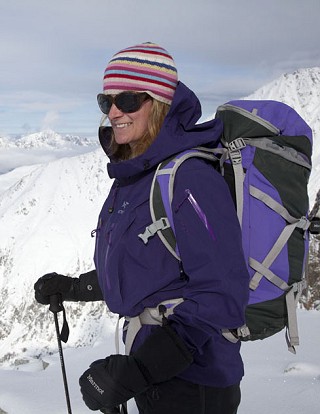
Mammut Nordwand Jacket
RRP: £550
Average Weight: 520g
Fabric: Gore-Tex Pro
More info on the Mammut Website
Fit and Cut: The Nordwand has an excellent slim and neatly cut body, with enough room for a mid-layer underneath, but no bulge over the stomach. Arm movement is superb with no lift of the hem.
Hood: The Nordwand's hood is well designed and very neat feeling and protects the head from the weather without restricting vision. The brim is stiffened but not really mouldable. As it's a little smaller than some of the others it is a bit tight over bulkier (old fashioned) helmets, and while the soft fabric covering the drawcord adds comfort it can also ice up a bit in 'Scottish' weather.
Fabric: The Nordwand uses a micro-ripstop fabric throughout which has a nice flexible feel and has proven suitably durable. The shoulders feature thin rubber strips to give additional rucksac strap protection which works very well.
Zips: The Nordwand uses standard water resistant zippers throughout – with the main zip being double-ended allowing access to underlayers without unzipping the whole jacket.
Pockets: The Nordwand features two well positioned and sized external chest pockets accessible when wearing a harness, and two mesh and one zipped internal pockets – in other words plenty to go around.
Adjustment: The adjustment on the Nordwand is generally excellent. The pull back on itself cuff design is great as it makes one-handed operation really easy though a bit more 'hook' velcro on tab would make it even more secure. The hood elastic ends are positioned so they can't whip the face only unless they are pulled right through, and the underarm zips work well.
Additional features: Given Mammut's alpine heartland it's no surprise that the Nordwand comes with a very effective removable (zip) snow skirt, and a resort-handy shoulder ski pass pocket.
Summary: Overall the Nordwand is a superb top of the range mountain shell suited to all mountain activities – though it does come at a price.
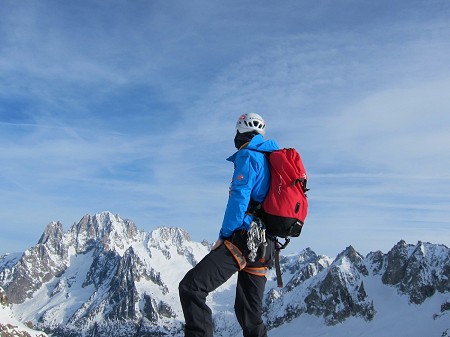
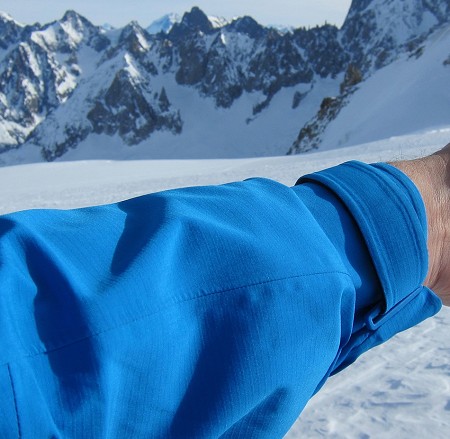
The North Face Gore Meru Jacket
RRP £350
Average Weight: 380g
Fabric: Gore-Tex Active Shell
More info on the TNF Website
Fit: The fit is quite slim; I can fit a mid layer underneath but just a lightweight one. In any case the fabric of this jacket is lighter and more breathable than the others and I tend to wear it for faster movement or warmer days. Worth noting for men: Charlie found the men's version a bit too baggy - see his review - TNF Meru Range. It has quite a long cut for a lightweight jacket.
Hood: The hood is big enough to fit over a helmet, but not overly capacious, and light enough to go fairly unnoticed when not in use. It allows a good unobstructed view when battoned down and has a regular laminated brim. A good amount of protection is offered, but not quite balaclava style. A toggle on the back of the head pulls the hood away from your face. I really like the system for tightening the hood downwards - you just pull a loop of cord with one hand, and press a toggle sewn inside the fabric to loosen it again.
Fabric: Gore-Tex's Active Shell is their lightest and most breathable hard shell fabric, designed for moving fast and/or working hard. How did they make it thinner? Basically the membrane is bonded directly to the fabric that sits next to your skin. The membrane is thinner and the backer is more stretched out, too, so sweat can get out faster. More in this UKC Gear News Item.
Pockets: The pockets are lined with really lightweight mesh and are a generous size, particularly lengthways. Widthways, they just about fit a map or water bottle. This jacket is designed to be as minimalistic as possible, hence the venting pockets instead of pit zips ... personally I'm not sure about these as you can only use them for venting if you're pockets are empty! They also allow your core to get wet if you leave them open.
Zips: This jacket has water resistant zips laminated in and good sized zip pulls which are easy to use with gloves. The main zip is two way and, like all two-way zips, can be fiddly in icy conditions.
Additional features: This jacket has 'grip zones' on the shoulders and hips to reduce straps moving about. This seems to be something quite a few companies are adopting. A nice idea but to be honest I haven't found it makes a noticeable difference. One plus point is that the grippers have all stayed on so far; I've heard complaints that other brand's grip zones peel off.
Summary: Not as warm and weather proof as the others tested - this is an ideal mountain jacket for moving fast and light. Note: Next autumn/winter the Gore Meru will be replaced by two Gore-Tex Pro jackets: the Kichatna Jacket and the Middle Triple Jacket.
Marmot Cerro Torre
RRP: £430
Average Weight: 580g
Fabric: Gore-Tex Pro
More info on the Marmot Website
Fit: For me the fit of the Cerro Torre is a bit on the generous side (though would be good for the big shouldered) and I found some lift in the hem when raising arms above the head.
Hood: The Cerro Torre has an excellent hood for the UK weather - it can be adjusted to create a protective tunnel for the eyes (see photo below right). The stiffened brim can be moulded to suit the requirements, and there is plenty of room to go over all helmets.
Fabric: The Cerro Torre has a heavy duty 'bombproof' feeling fabric which still drapes well and doesn't feel stiff or restrictive. The extra weight of heftier fabric is pretty minimal - the Cerro Torre feels tough enough for many years of service.
Zips: The Cerro Torre uses standard water resistant zippers throughout, though the main zip not double ended.
Pockets: The Cerro Torre features four outer pockets. The lower (hand) ones are a good size, but sit a little too low so are slightly blocked by a harness. The upper napoleon chest pockets are easily accessible but perhaps a little on the small side (though this does make finding small items easier). Inside there is one medium sized mesh pocket with an open elasticated top.
Adjustment: Adjustment on the Cerro Torre is generally good with everything where expected and neatly designed.
Additional features: The Cerro Torre comes kitted out for skiers with a remobavle snow skirt and lift pass shoulder pocket.
Summary: The Cerro Torre is a bombproof shell that given the ski features feels perhaps slightly angled towards alpine (winter) usage.
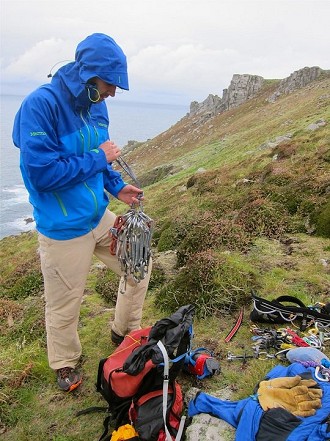
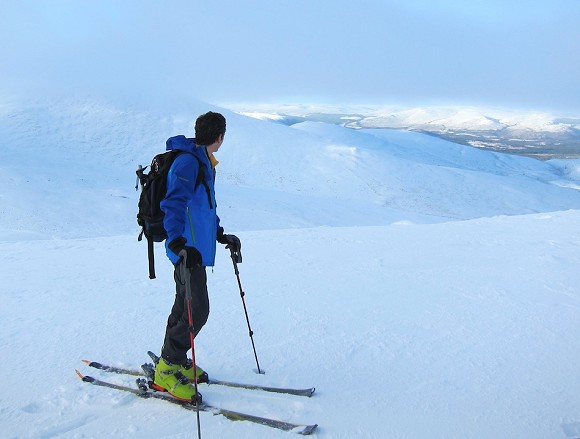
Mountain Equipment Kalanka
RRP: £370
Average Weight: 550g (Large)
Fabric: Gore-Tex Stretch Pro
More info on the Mountain Equipment Website
Fit: The Kalanka has a good slimmish fit in the body. The arms are slightly long when down, but this does give superb overhead fit and movement.
Hood: As a UK based company Mountain Equipment know what a hood needs to do – the Kalanka has a very protective but unrestrictive hood with a mouldable wire stiffened brim. An interesting feature is that the Kalanka has rubber strips on the inside of the hood - these work well to help the hood to move with a helmet but can feel a little bit odd (sticky) on hair.
Fabric: The Kalanka uses a stretch Gore-Tex pro-shell fabric throughout. This works very well feeling very supple and 'softshell'. The only criticism is that rain seems to bead a bit less well on the fabric than on non-stretch fabric, though breathability remains excellent.
Zips: The Kalanka answers the prayer on more durable zips, using the superb 'Riri' (drysuit derived – see introduction) zips on all the external zips, although this does give it a bit of an 'industrial' look. The main zip is double-ended.
Pockets: The Kalanka has four large outer pockets (two hand and two napolean) all of which are fully accessible when wearing a harness.
Adjustment: All the adjustment drawcords work very well, are intuitive to use and neatly built in so don't catch or tangle.
Summary: The Kalanka is a superb out-and-out climbing and mountaineering jacket which is brilliant for Scottish winter climbing and anything else it gets thrown at, and great value for money. See also Charlie Boscoe's review.
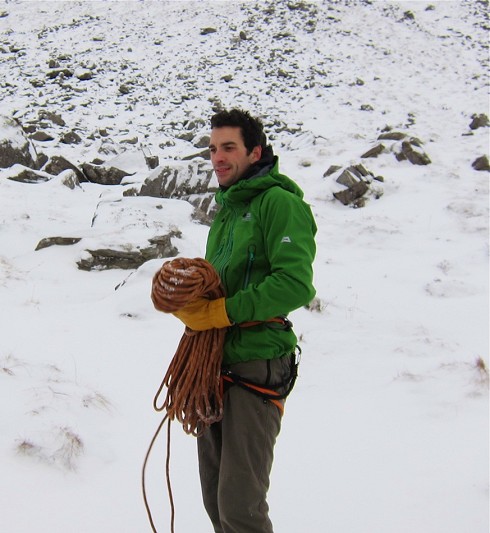
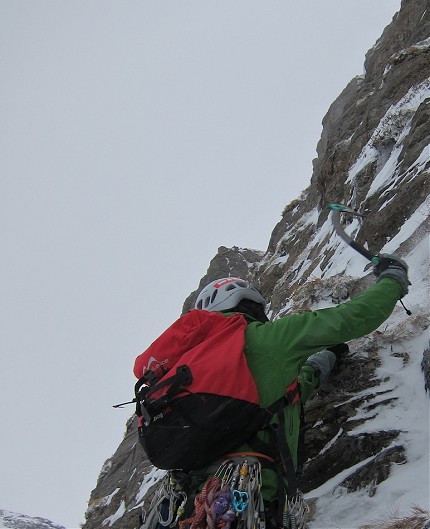
Patagonia Super Alpine
RRP: £500
Average Weight: 540g
Fabric: Gore-Tex Pro
More info on the Patagonia Website
Fit: The fit is slightly boxy, but this does mean the Super Alpine can comfortably accommodate bulky layers underneath for bitter days. Arm and general movement is excellent.
Hood: The Super Alpine has a good, well designed hood, though the stiffened brim (a stiff patch rather than wire) isn't mouldable. The hood has plenty of room for all helmets.
Fabric: The Super Alpine uses two different fabrics – on the chest an arms a micro-ripstop, while on the back, shoulders and underarm a heavier duty fabric (perhaps a little on the stiff and crinkly side) is used to protect from rucksack wear.
Zips: The Super Alpine uses standard water resistant zippers throughout and the main zip is not double ended.
Pockets: The Super Alpine has two brilliant bellows chest pockets that swallow masses of stuff (goggles, small water bottle, beefy gloves and more) without making the chest baggy when the pockets aren't full. There is one small internal zip pocket.
Adjustment All the drawcords on the Super Alpine work very well and the toggles are very neatly built into rubberised patches in the jacket rather than attached separately. The underarm ventilation zips work well.
Additional features: Along with the bellows pockets, the other innovative feature of the Super Alpine is the cuffs. These have a stretchy rubberised fabric flap that extends out for an inch beyond the end of the cuff which when the Velcro is tightened creates a very effective seal around the wrist keeping rain and snow out.
Summary: The Super Alpine is a very capable all-round mountaineering jacket in traditional minimal but innovative Patagonia tradition. The striking two-tone colour scheme also looks great.
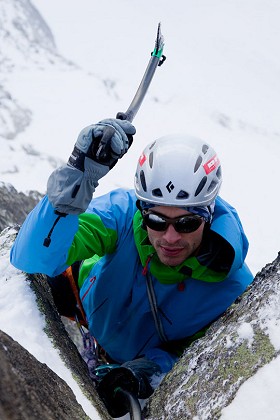

Outdoor Research Mentor
RRP: £370
Average Weight: 481g (Large)
Fabric: Gore-Tex Pro
More info on the Outdoor Research Website
Fit: The fit of the Mentor felt a bit on the generous side for me, with a bit too much fabric around the waist for a lanky body type. The general movement and arms above cut is good.
Hood: The Mentor has a good hood that accommodates all helmets easily, but also adjusts down pretty well. The concealed drawcords prevent any chance of face-slap from the drawcord ends.
Fabric: The Mentor uses a micro-ripstop on most of the jacket, with the shoulders and hips reinforced to protect against wear from rucksack straps and waistbelt.
Zips: The Mentor uses standard water resistant zippers (in eye catching bright yellow) throughout and the main zip is double ended.
Pockets: The Mentor features two very spacious outer hand pockets though they are not fully accessible when wearing a harness. There is a small outer chest pocket (GPS unit sized), and two small inner mesh pockets complete with slots for headphone cables!
Adjustment: All the drawcords and adjustments on the Mentor work well and are reasonably intuitively placed. Being bright yellow (aong with the zips) makes them easy to locate as well. However, the velcro on the cuffs could be a bit better positioned as there is little contact area when cinching the cuffs tight.
Additional features: The Mentor features a novel ventilation design that extends the underarm venting zips right down to the hem with a zip so they can open from the hem. This allows a huge amount of airflow adjustment while on the move – the jacket can be opened up to almost act like a poncho. However, as these zips run down the hip they did ruck a bit under a harness from time to time.
Summary: The Mentor is a competitively priced and stylish (in a reasonably discrete way) shell jacket with masses of on-the-go ventilation making it possible to wear from roadside to summit and back again without taking off layer.

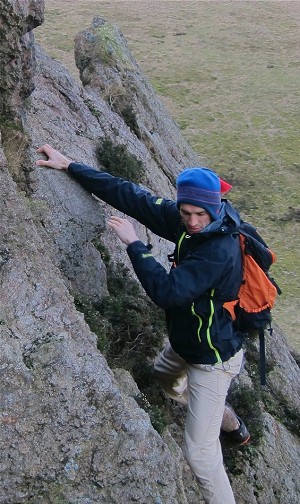
Rab Stretch Neo Jacket
RRP: £250
Average Weight: 480g
Fabric: Polartec NeoShell
More info on the Rab Website
Fit: This jacket has a flattering, well-fitting cut. THere's room for a midlayer underneath without it being at all baggy. A generous length keeps your bum warm and a drawcord hem cinches draughts out in the usual way. There's plenty of movement in the arms and the sleeves are nice and long - I can tuck my hands in for belaying. I also like the cuffs, which adjust with rubberised Velcro tabs. These proved easy to grab, even with big gloves and numb fingers in Scottish winter.
Hood: My favourite hood on the test because it has a wired peak, which offers more adjustability than just a laminated one when trying to direct the weather out. It easily covers a helmet and feels a bit spacious without one (see photo). A rear toggle pulls it off your face in the usual way and two front drawcords run through fabric channels either side of your face - similar to the Arc'teryx Alpha SV hood. The high neck on this jacket effectively and comfortably adds to the cosy balaclava effect.
Fabric: I'm a definite Polartec NeoShell fan, see my review of the fabric here.
Pockets: The two front Napoleon chest pockets easily swallow maps and guidebooks. They are the size of the dark colour fabric on the front of the jacket (see photo of jacket range above) - as far as the side seam - so pretty big. This results in two layers of fabric over the chest, which is good for keeping wind out.
Zips: Rab have used a finer toothed YKK Aquaguard, it can be a little sticky in cold weather but has a nice big zip pull which is easy to grab with gloves on.
Additional features: That's it really.
Summary: A fantastic jacket from Rab with what I found to be a perfect fit and an ideal balance between waterproofing and breathability. Any niggles with it are small, it's become a favourite.
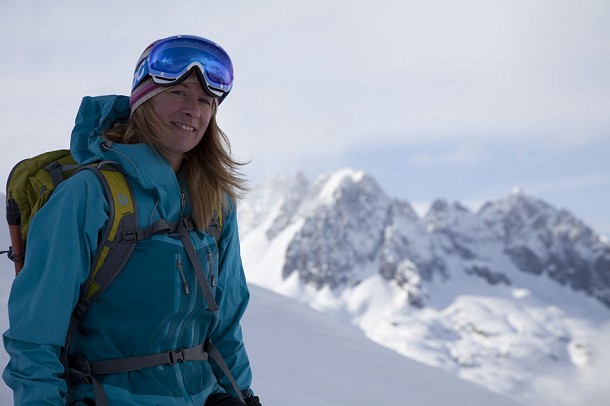
Photo: Nick Payne',"right")]
Summary
All the shells reviewed are tough mountain workhorses that protect the wearer from wind, rain, snow and ice and come back for more again and again. Selecting a shell, it is best if possible to check the fit (everyone's different) and that the features match the intended use.

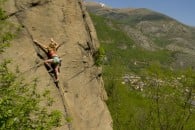

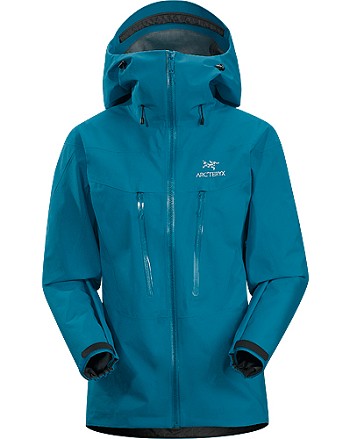
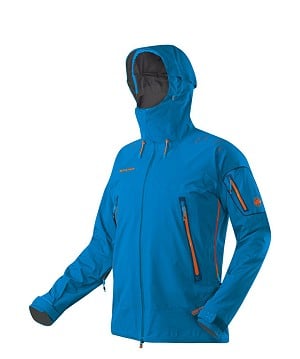
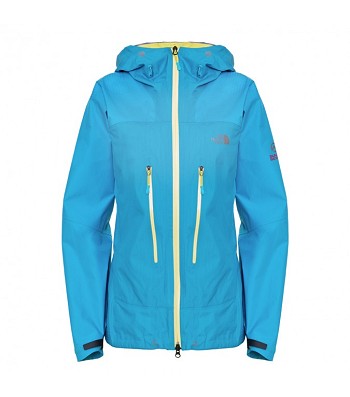


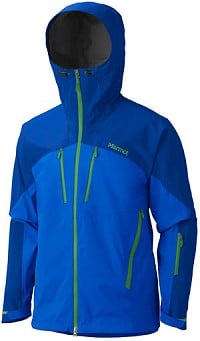
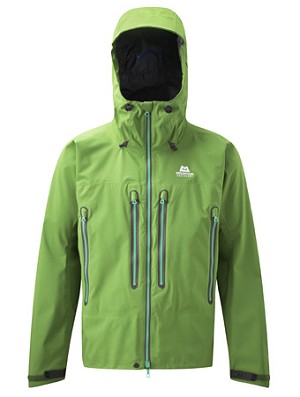

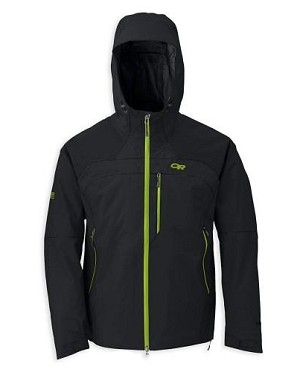
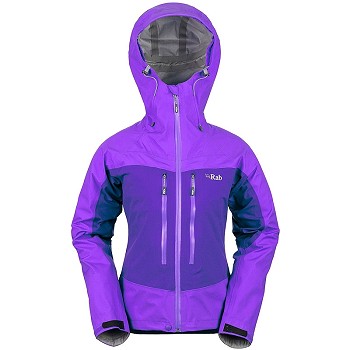
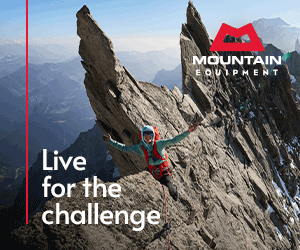







Comments